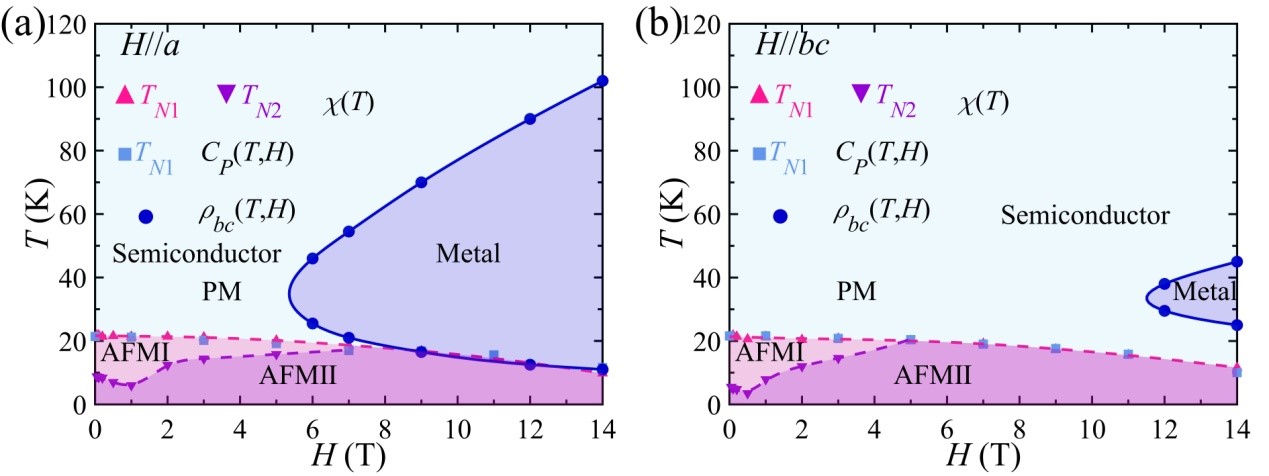
A research team led by associate researcher HAN Yuyan from the High Magnetic Field Laboratory of Hefei Institutes of Physical Science, Chinese Academy of Sciences, in collaboration with Prof. LIU's group from Anhui University, conducted a systematic investigation into the physical properties of EuMnSb2 single crystals.
Their findings, published in the Journal of Alloys and Compounds, contribute to the growing interest in magnetic topological materials, which hold promise for applications in magnetic switches and storage devices.
As science progresses, magnetic topological materials have emerged as promising candidates for applications in fields such as magnetic switches and magnetic storage devices. Therefore, it is particularly important to synthesize novel magnetic topological materials and explore their physical characteristics.
In this study, researchers synthesized EuMnSb2 single crystals using flux method and studied its magnetic, magnetoresistance, and specific heat properties.
They found that when Sb served as a flux, the crystals showed metallic electrical transport property, whereas when Sn was utilized, the crystals exhibited semiconductor-type transport property. Semiconductor-type EuMnSb2 crystal demonstrated two magnetic transitions, corresponding to the paramagnetic-antiferromagnetic transition and the reorientation of Eu moments.
Additionally, the magnetic field can modulate the magnetic, magnetoresistance, and specific heat properties. Particularly under strong magnetic fields, the material exhibits anisotropic magnetoresistance and giant negative magnetoresistance.
Based on these experimental results, researchers constructed the electronic phase diagram of this material, which is classified into antiferromagnetic semiconductor, paramagnetic semiconductor, and paramagnetic metal. The above unique properties of the semiconductor-type EuMnSb2 can be attributed to the fact that both magnetic field and temperature influence the orientation of Eu moments, thereby inducing changes in magnetic entropy and band structure.
"Our findings elucidate the correlation between magnetic moments and physical properties in magnetic topological materials, thereby offering experimental avenues for their potential application in electronic devices," said HAN Yuyan.

H-T phase diagrams for H//a (a) and H//bc (b) are extracted from the magnetic susceptibility, specific heat capacity, and resistivity measurements. (Image by HAN Yuyan)